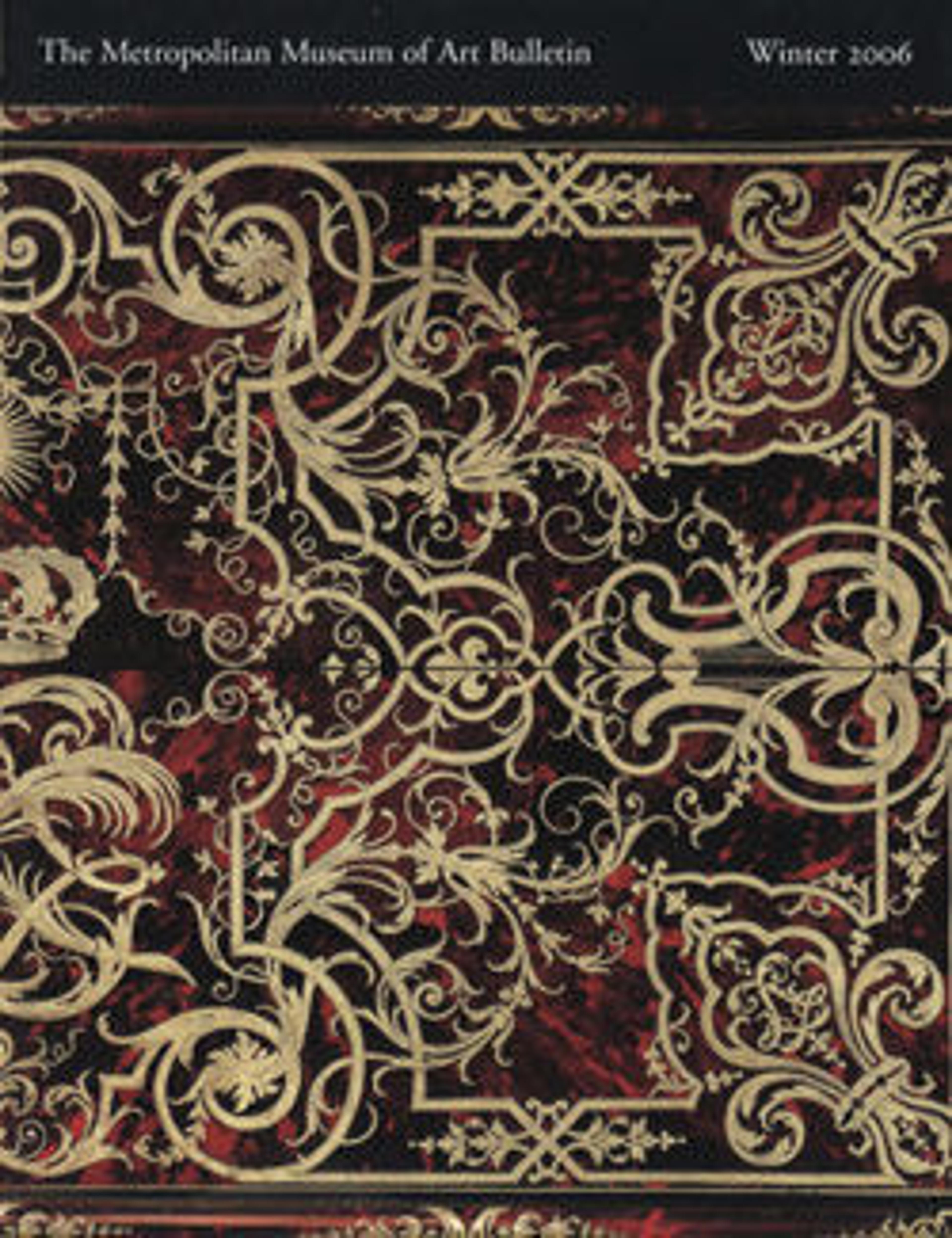Folding stool (pliant) (one of a pair)
On May 1, 1786, Jean Hauré (active 1771–after 1796) received a commission for a set of furniture comprising forty pliants or folding stools, twelve regular stools, or tabourets, a folding screen, and a fire screen for Marie Antoinette's Salon des Jeux at Compiégne. Twenty-four of the X-shaped folding stools, all the tabourets, and both screens were then sent instead to the queen's gaming room at Fontainebleau. On September 3 of the same year Hauré was asked to supply an additional twenty-four pliants, twelve tabourets, a chamber screen, and a fire screen for Compiegne. Two of the pliants are now in the Museum's collection, a gift of the Wrightsmans, but whether they were part of the first or the second order and whether they remained at Compiegne or were sent to Fontainebleau is not known.
As was the case with the secretary, this large set of furniture was the fruit of a collaborative effort, and the record of the commission provides a roll call of the artists: The beechwood frames were provided by Jean-Baptiste-Claude Sené, who was also paid form aking a preliminary model. The sprigs and wreaths of ivy, beading, twisted-cord ornament, and lion's-paw feet were carved by the sculptor Nicolas Vallois (1738–1790) under Hauré's direction. Louis-François Chatard painted the furniture an off-white color, highlighting the decoration in gold. A metalworker named Courbin supplied the iron bolts placed at the crossing of the legs so that the stools could be folded, and one Chaudron gilded the rosette-shaped bosses on the ends of the bolts. Claude François Capin upholstered the stools and applied fringed borders. The firm of Pernon in Lyon wove the fabric for the original upholstery and the matching wall hangings, a ribbed silk chiné embellished with a bower of trees, floral garlands, and hollyhocks on a white ground.
As was the case with the secretary, this large set of furniture was the fruit of a collaborative effort, and the record of the commission provides a roll call of the artists: The beechwood frames were provided by Jean-Baptiste-Claude Sené, who was also paid form aking a preliminary model. The sprigs and wreaths of ivy, beading, twisted-cord ornament, and lion's-paw feet were carved by the sculptor Nicolas Vallois (1738–1790) under Hauré's direction. Louis-François Chatard painted the furniture an off-white color, highlighting the decoration in gold. A metalworker named Courbin supplied the iron bolts placed at the crossing of the legs so that the stools could be folded, and one Chaudron gilded the rosette-shaped bosses on the ends of the bolts. Claude François Capin upholstered the stools and applied fringed borders. The firm of Pernon in Lyon wove the fabric for the original upholstery and the matching wall hangings, a ribbed silk chiné embellished with a bower of trees, floral garlands, and hollyhocks on a white ground.
Artwork Details
- Title: Folding stool (pliant) (one of a pair)
- Maker: Jean-Baptiste-Claude Sené (1748–1803)
- Decorator: Carved by Nicolas François Vallois (1738–1788)
- Maker: Gilded by Louis-François Chatard (ca. 1749–1819)
- Maker: Rosette-shaped bosses on bolt ends gilded by Chaudron
- Date: 1786
- Culture: French
- Medium: Carved and painted beechwood, covered in pink silk
- Dimensions: 18 1/4 in. × 27 in. × 20 1/4 in. (46.4 × 68.6 × 51.4 cm)
- Classification: Woodwork-Furniture
- Credit Line: Gift of Mr. and Mrs. Charles Wrightsman, 1977
- Object Number: 1977.102.9
- Curatorial Department: European Sculpture and Decorative Arts
More Artwork
Research Resources
The Met provides unparalleled resources for research and welcomes an international community of students and scholars. The Met's Open Access API is where creators and researchers can connect to the The Met collection. Open Access data and public domain images are available for unrestricted commercial and noncommercial use without permission or fee.
To request images under copyright and other restrictions, please use this Image Request form.
Feedback
We continue to research and examine historical and cultural context for objects in The Met collection. If you have comments or questions about this object record, please contact us using the form below. The Museum looks forward to receiving your comments.
